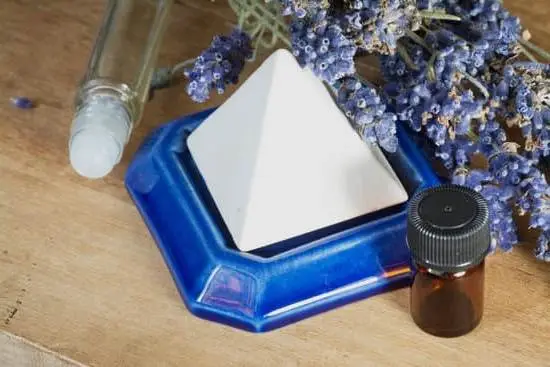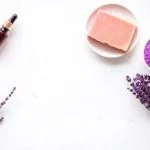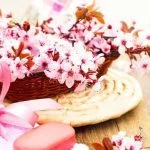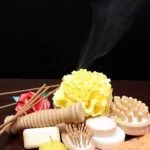Are you looking to bring the soothing scents and therapeutic benefits of aromatherapy into your home? In this article, we will explore the world of aromatherapy sticks and guide you through the process of making your very own custom creations. Whether you are new to aromatherapy or a seasoned enthusiast, this comprehensive guide will provide you with the knowledge and skills needed to create aromatic sticks tailored to your preferences and needs.
Aromatherapy has been used for centuries as a holistic healing practice, utilizing natural plant extracts to promote physical and emotional well-being. Aromatherapy sticks, also known as incense sticks, offer a convenient way to enjoy the benefits of essential oils in a simple and effective manner. From relaxation and stress relief to boosting focus and energy, aromatherapy sticks can have a significant impact on mood and overall wellness.
In this section, we will delve into the origins of aromatherapy and its evolution over time. Additionally, we will discuss the numerous benefits associated with using aromatherapy sticks, from enhancing relaxation to creating an inviting atmosphere in any space. Understanding the history and advantages of aromatherapy will provide valuable context as we proceed with exploring how to make these aromatic delights at home.
Understanding Aromatherapy Oils
Aromatherapy sticks are a great way to enjoy the benefits of essential oils in a convenient and portable form. However, before you can start making your own aromatherapy sticks, it’s important to understand the different types of essential oils and their specific benefits.
There are numerous types of essential oils available on the market, each with its own unique properties and potential therapeutic effects. Some common essential oils used in aromatherapy include lavender, peppermint, eucalyptus, and lemon. Lavender oil is known for its calming and relaxing properties, while peppermint oil can help with focus and mental clarity. Eucalyptus oil is often used for respiratory support, and lemon oil is known for its uplifting and energizing effects.
When choosing essential oils for your aromatherapy sticks, it’s important to consider both the desired scent as well as the intended therapeutic benefits. For example, if you’re looking to create a stick that promotes relaxation and stress relief, you may want to use lavender or chamomile essential oil.
To make sure you choose the right oils for your aromatherapy sticks, research the specific properties of each essential oil and consider how they align with your own needs or preferences. It’s also important to ensure that any oils you use are safe for topical use and properly diluted before applying them to your skin or using them in aromatherapy sticks.
In order to make effective aromatherapy sticks that provide the desired therapeutic effects, choose your essential oils carefully based on their specific benefits and scents that appeal to you.
Materials and Tools Needed
Materials Needed
To create your own aromatherapy sticks, you will need a few essential materials. These include bamboo skewers or wooden dowels, essential oils in your preferred scents, carrier oils such as almond oil or jojoba oil, beeswax or soy wax, and small containers for melting and mixing the ingredients. You may also want to consider adding dried flowers or herbs for decorative purposes.
Tools Needed
In addition to the materials mentioned above, you will need a double boiler or a makeshift version using a small pot and a heat-safe bowl that fits on top of it. This is necessary for melting the waxes and oils together. You will also need a stirring tool such as a wooden spoon or silicone spatula, as well as small containers for pouring and storing the mixture.
Where to Purchase Materials
You can easily find the materials needed for making aromatherapy sticks at local craft stores, specialty health stores, or online retailers. Essential oils can be found in various scents and qualities from reputable suppliers.
When purchasing these materials, be sure to read reviews and do some research to ensure that you are getting high-quality ingredients for your aromatherapy sticks. Following these guidelines on how to make aromatherapy sticks will ensure that you have the right tools and materials needed to get started on creating your very own customized aromatherapy sticks at home.
Step-by-Step Guide to Making Aromatherapy Sticks
Making your own aromatherapy sticks can be a fun and rewarding process. Not only do you get to choose the scents that you enjoy the most, but you also have control over the ingredients used, ensuring that they are natural and non-toxic. In this section, we will provide you with a step-by-step guide on how to make your very own aromatherapy sticks at home.
To begin, gather all the necessary materials and tools needed for this project. This includes essential oils of your choice, carrier oils such as jojoba or almond oil, beeswax pellets, candle wicks, a double boiler or microwave-safe bowl, a stirring utensil, and empty lip balm tubes or small containers for molding the sticks. Once you have everything ready, it’s time to start creating your aromatherapy sticks.
The first step is to melt the beeswax in the double boiler or microwave-safe bowl. Once melted, add in the desired amount of carrier oil and essential oils based on your preference. Stir the mixture thoroughly to ensure that all ingredients are well combined.
After that, carefully pour the mixture into the empty lip balm tubes or containers and insert a candle wick in each one while it’s still warm. Allow them to cool and solidify before sealing them with their respective caps. And there you have it – your own custom-made aromatherapy sticks ready for use.
Customizing Your Aromatherapy Sticks
Creating your own custom aromatherapy sticks allows you to tailor the scents to your personal preferences and needs. When it comes to choosing the essential oils for your aromatherapy sticks, it’s important to consider the therapeutic properties of each oil. For example, lavender is known for its calming and relaxing effects, while peppermint is invigorating and energizing. Researching and understanding the benefits of different essential oils will help you make informed decisions when customizing your aromatherapy sticks.
In addition to choosing the right essential oils, you can also personalize your aromatherapy sticks by adding decorative elements. This can include dried flowers, herbs, or even colorful ribbons. Not only do these decorative elements enhance the visual appeal of the sticks, but they can also add additional aromatic properties to the blend.
When customizing your aromatherapy sticks, consider creating a variety of scents for different purposes. For example, you may want a calming blend for relaxation before bedtime, and an uplifting blend for increasing focus during work hours. By customizing your aromatherapy sticks with specific scents, you can address various needs and moods throughout your day.
| Item | Description |
|---|---|
| Essential Oils | Choose therapeutic oils based on their properties |
| Decorative Elements | Add dried flowers or herbs for visual appeal and added scent |
| Variety of Scents | Create different blends for specific purposes and moods |
Storage and Preservation
Once you have successfully created your own custom aromatherapy sticks, it is important to ensure that they are stored and preserved properly in order to maximize their shelf-life and effectiveness. Proper storage and preservation techniques can help maintain the quality of the essential oils within the sticks, allowing you to continue enjoying their therapeutic benefits for a longer period of time.
Best Practices for Storing Your Aromatherapy Sticks
To maintain the potency of the essential oils in your aromatherapy sticks, it is crucial to store them in a cool, dark, and dry place. Exposure to light, heat, and humidity can cause the oils to degrade more quickly. Consider storing your homemade sticks in airtight containers or glass jars to protect them from environmental factors. Additionally, labeling each container with the date of creation and type of essential oil used can help you keep track of their freshness.
How to Prolong the Shelf-Life of the Sticks
In addition to proper storage, there are several ways to prolong the shelf-life of your aromatherapy sticks. One effective method is to add a small amount of vitamin E oil or rosemary extract to the blend before rolling them into sticks.
These natural antioxidants can help slow down the oxidation process and prevent the essential oils from going rancid. Furthermore, using high-quality carrier oils with a longer shelf-life, such as jojoba oil or fractionated coconut oil, can also contribute to extending the lifespan of your aromatherapy sticks.
By implementing these storage and preservation practices, you can ensure that your homemade aromatherapy sticks remain potent and effective for an extended period of time. With proper care and maintenance, you will be able to continue reaping the therapeutic benefits of these customized sticks in your daily life. So go ahead and try making your own aromatherapy sticks at home – your well-being will thank you for it.
Using Aromatherapy Sticks
Aromatherapy sticks provide a convenient and effective way to enjoy the benefits of essential oils. Once you have made your own custom aromatherapy sticks, it’s time to learn how to incorporate their use into your daily routine. Here are some tips for maximizing the benefits of aromatherapy sticks:
1. Inhale deeply: When using aromatherapy sticks, take a moment to inhale deeply and savor the scent of the essential oils. This allows the aromatic compounds to enter your body and provide their therapeutic effects.
2. Use in different settings: Aromatherapy sticks can be used in various settings, such as at home, at work, or while traveling. Consider placing them in areas where you spend a lot of time, such as your desk or bedside table, to enjoy their benefits throughout the day.
3. Combine with mindfulness practices: Incorporating the use of aromatherapy sticks into mindfulness practices can enhance their effectiveness. Try using them during meditation, yoga, or other relaxation techniques to create a soothing and calming atmosphere.
4. Experiment with different scents: With custom aromatherapy sticks, you have the freedom to personalize the scents according to your preferences. Try experimenting with different essential oil blends to find what works best for you.
Remember that using aromatherapy sticks is a personal experience, and everyone may respond differently to various scents and methods of use. It’s important to pay attention to how your body and mind react to different essential oils and adjust your usage accordingly.
Conclusion
In conclusion, aromatherapy sticks have been used for centuries to promote relaxation, improve mood, and alleviate physical ailments. With the diverse range of essential oils available, you can easily customize your own aromatherapy sticks to suit your specific needs and preferences. By following the step-by-step guide provided in this article, you will learn how to make aromatherapy sticks at home and personalize them with different scents and decorative elements.
Not only are aromatherapy sticks simple to create, but they also offer long-lasting benefits when stored and preserved correctly. By implementing the best practices for storing your aromatherapy sticks, you can prolong their shelf-life and continue reaping the positive effects of aroma therapy. Whether you choose to use them at home or on-the-go, incorporating aromatherapy sticks into your daily routine is an easy way to enhance your overall well-being.
So why not give it a try? Making your own aromatherapy sticks is a rewarding and cost-effective way to enjoy the benefits of essential oils. By taking charge of their creation process, you can ensure that each stick is tailored to meet your individual needs. We encourage our readers to experiment with different scents, get creative with decorative elements, and discover the incredible benefits of using homemade aromatherapy sticks in their daily lives.
Frequently Asked Questions
How Do You Make Fragrance Sticks at Home?
Making fragrance sticks at home can be a fun and creative DIY project. To start, gather wooden sticks, essential oils, carrier oil, and vodka or witch hazel. Mix the essential oils with the carrier oil and alcohol, then soak the wooden sticks in the mixture. Let them dry before using.
How Do You Mix Essential Oils for Diffuser Sticks?
Mixing essential oils for diffuser sticks requires careful consideration to create a balanced and pleasant aroma. Start by choosing a combination of essential oils that complement each other, such as lavender and chamomile for a relaxing blend. Then mix the oils with a carrier oil before soaking the diffuser sticks.
What Are Diffuser Sticks Made Of?
Diffuser sticks are typically made of natural materials such as rattan reeds or bamboo. These materials have porous properties that allow them to absorb and diffuse the essential oils effectively. Some diffuser sticks may also be made of synthetic materials designed specifically for diffusing fragrances in a room while adding a decorative element to the space.

Are you looking for a natural way to improve your health and wellbeing?
If so, aromatherapy may be the answer for you.





